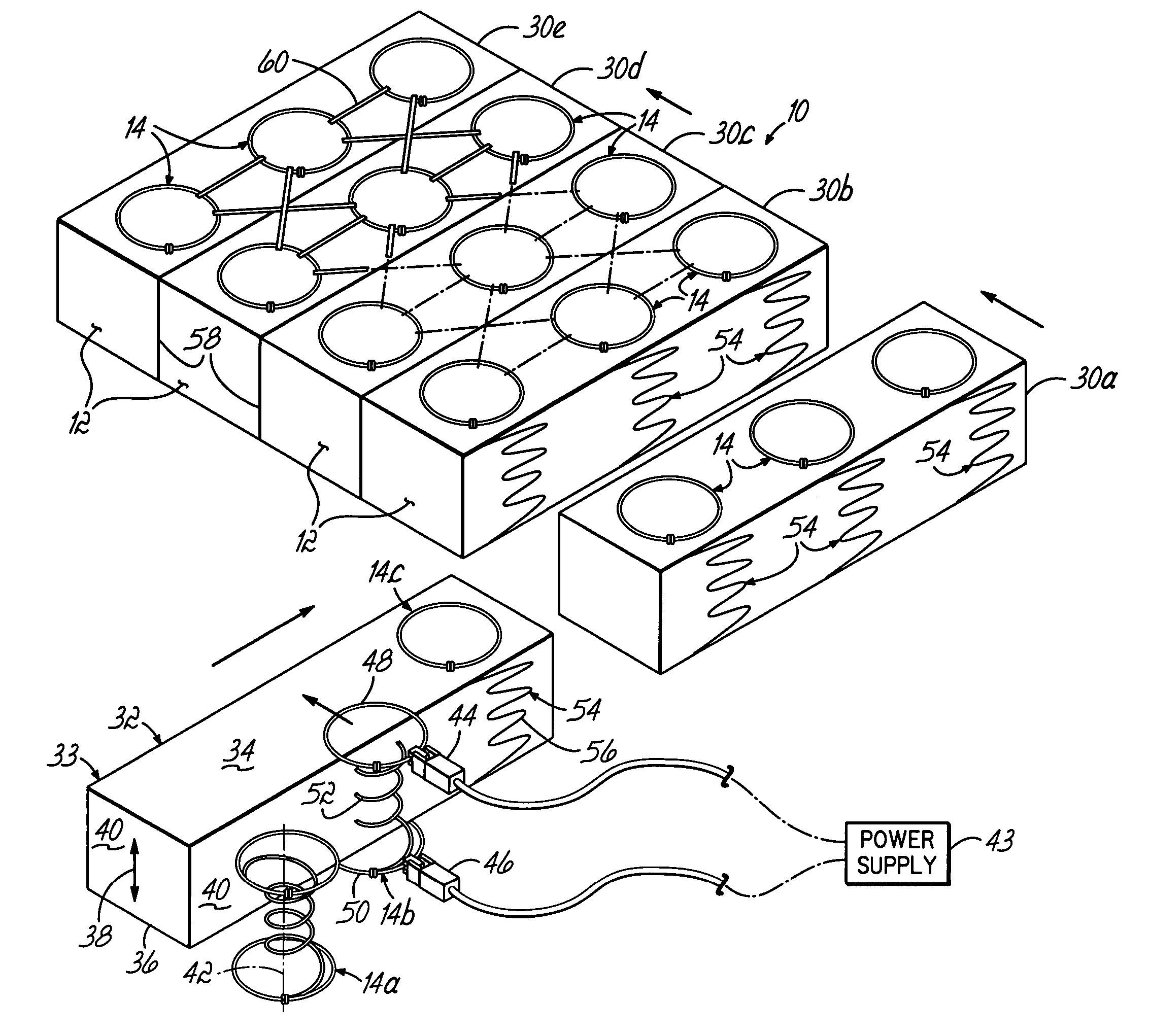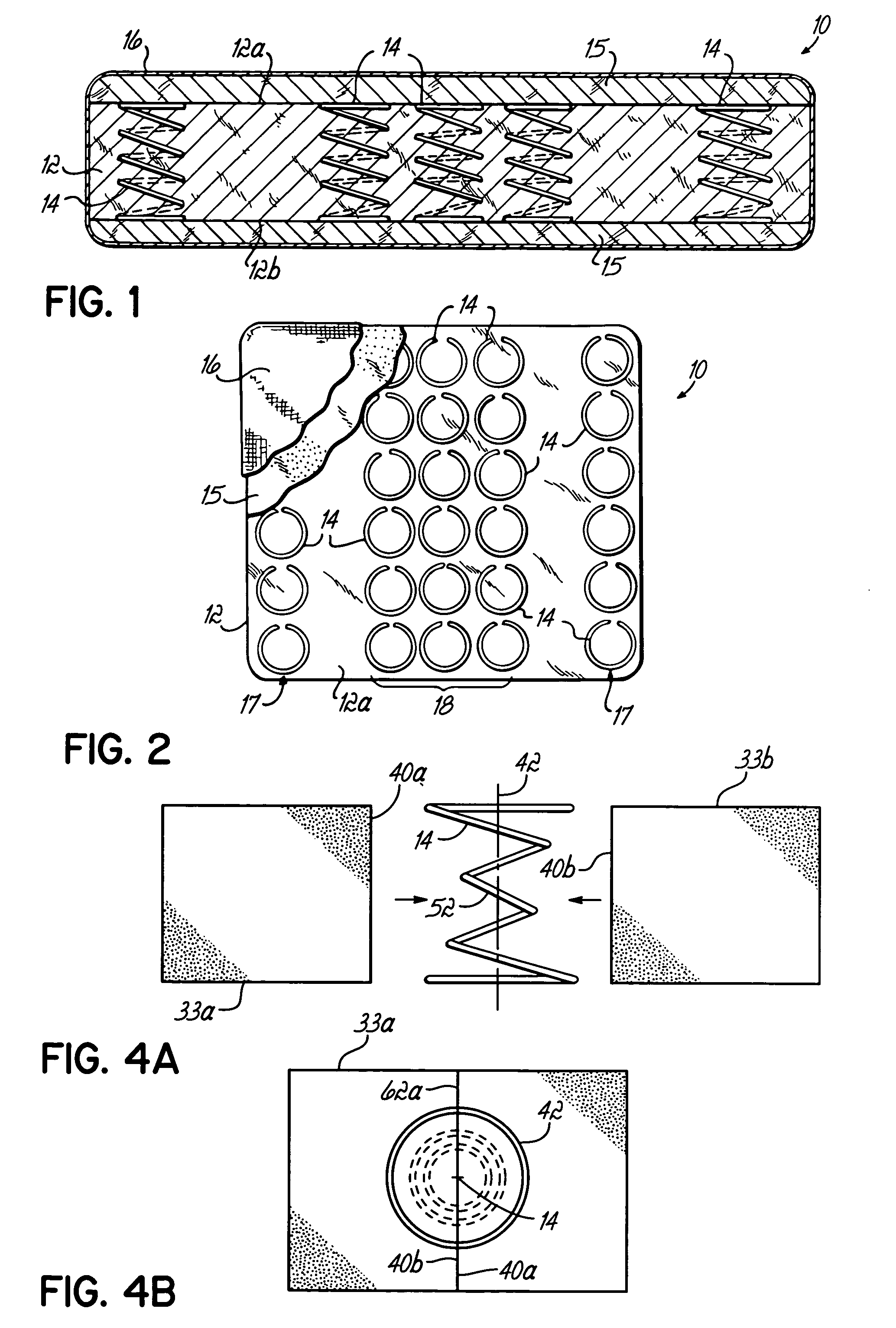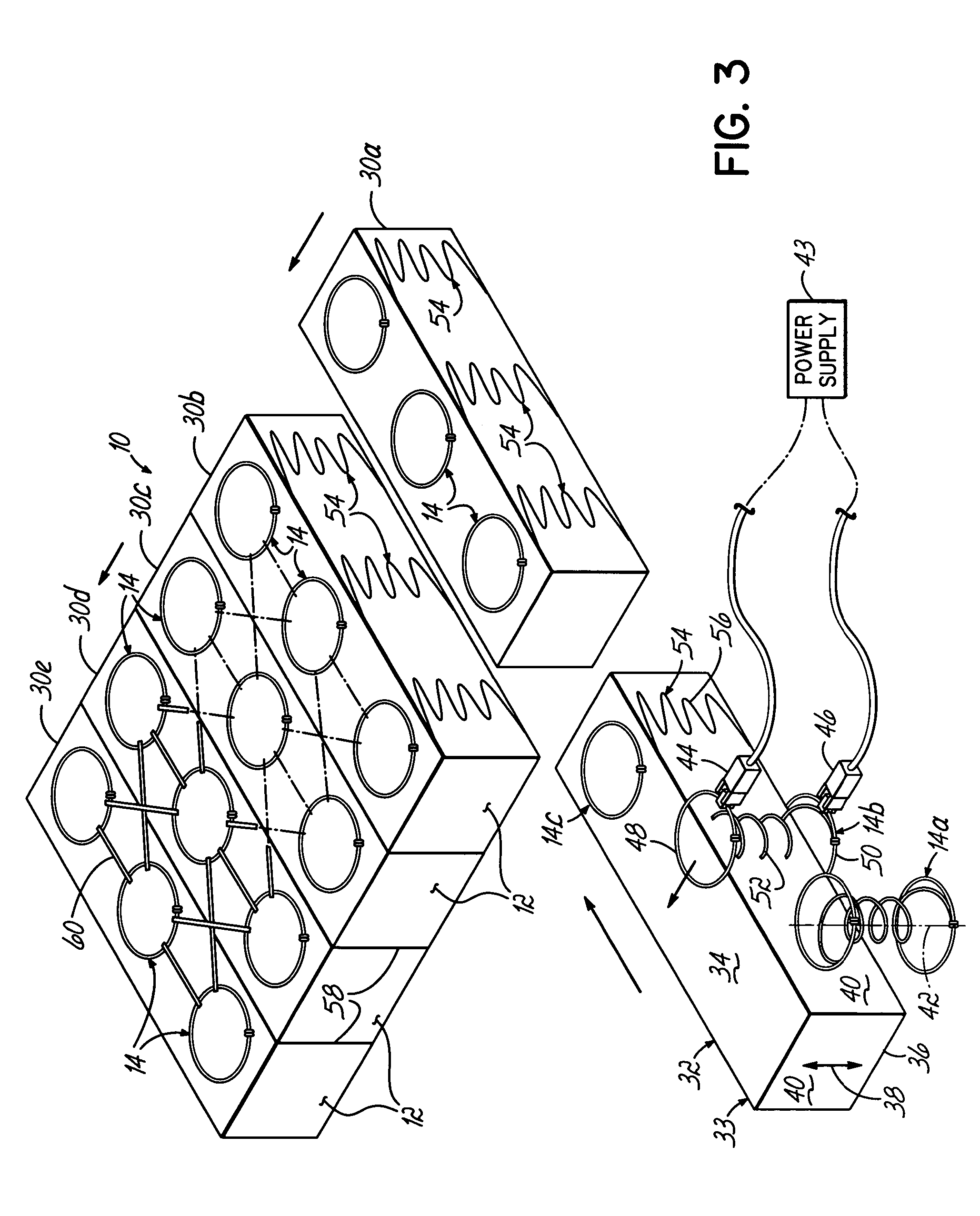Method of making resilient structure including inserting heated coil spring through side surface of fiber batt
- Summary
- Abstract
- Description
- Claims
- Application Information
AI Technical Summary
Benefits of technology
Problems solved by technology
Method used
Image
Examples
Embodiment Construction
[0035]Referring to FIG. 1, a resilient structure 10 includes a heat bonded, low melt, fiber batt 12. Such a fiber batt may be formed from a bale of dual polymer fibers, for example, Celbond® staple fibers, manufactured by Hoechst Celanese Corporation. The high melt or heat stable fibers are mixed with low melt fibers. Typically, a bale of the dual polymer fibers is picked and fluffed to a desired degree, then tumbled and fed to a feed hopper where it is blended with a desired mixture of heat stable fibers. Thereafter, the fiber mass is carded by a series of garneting machines and layered until a desired weight is achieved, as is known in the industry.
[0036]Densifying a fiber batt of this type involves various stages of heating and compressing to form a predetermined thickness. The dual polymer fiber includes a low melt polymer sheath which surrounds a thermally stable polyester core. When heated, compressed and allowed to cure, the external sheaths randomly adhere to surrounding fib...
PUM
| Property | Measurement | Unit |
|---|---|---|
| Length | aaaaa | aaaaa |
| Resilience | aaaaa | aaaaa |
Abstract
Description
Claims
Application Information
 Login to View More
Login to View More - R&D
- Intellectual Property
- Life Sciences
- Materials
- Tech Scout
- Unparalleled Data Quality
- Higher Quality Content
- 60% Fewer Hallucinations
Browse by: Latest US Patents, China's latest patents, Technical Efficacy Thesaurus, Application Domain, Technology Topic, Popular Technical Reports.
© 2025 PatSnap. All rights reserved.Legal|Privacy policy|Modern Slavery Act Transparency Statement|Sitemap|About US| Contact US: help@patsnap.com



